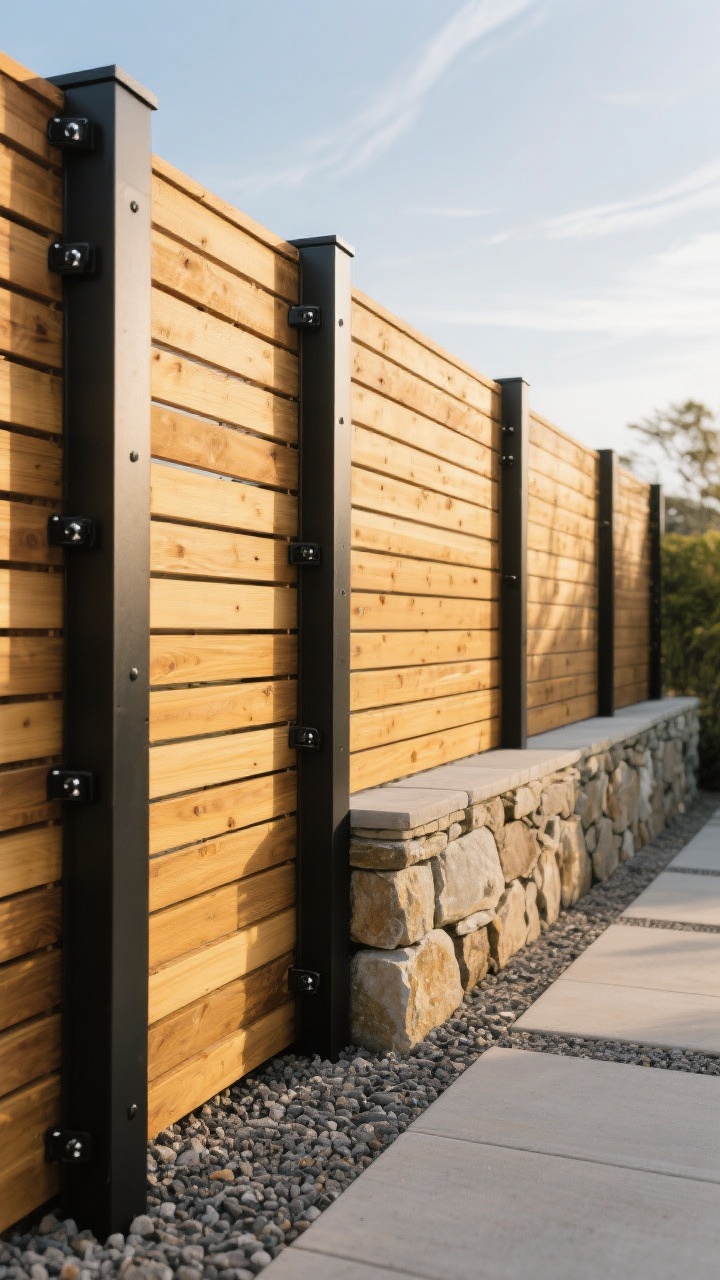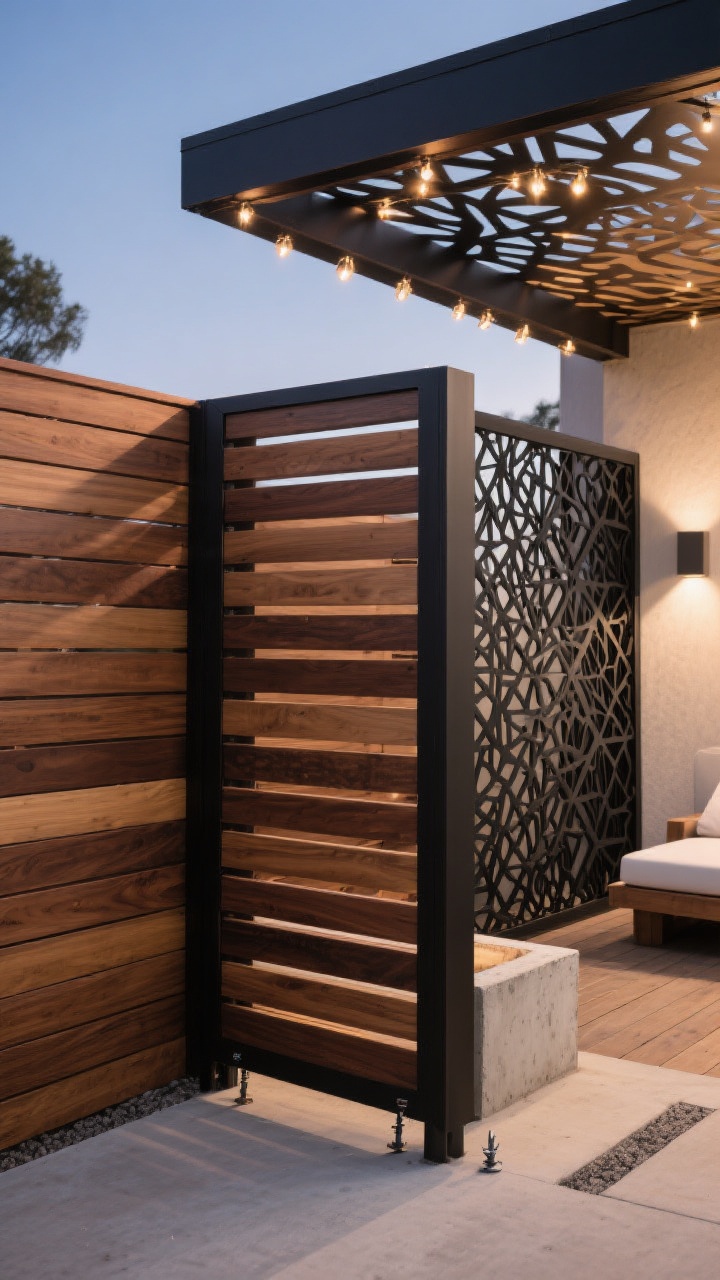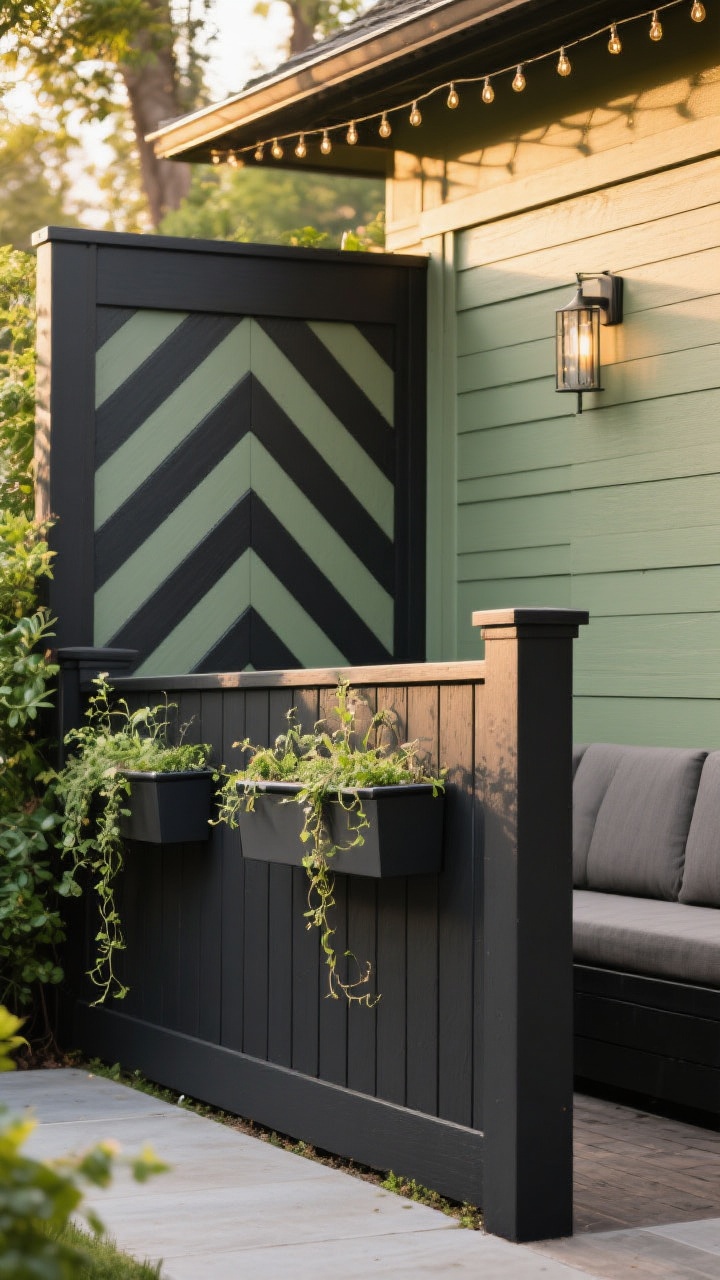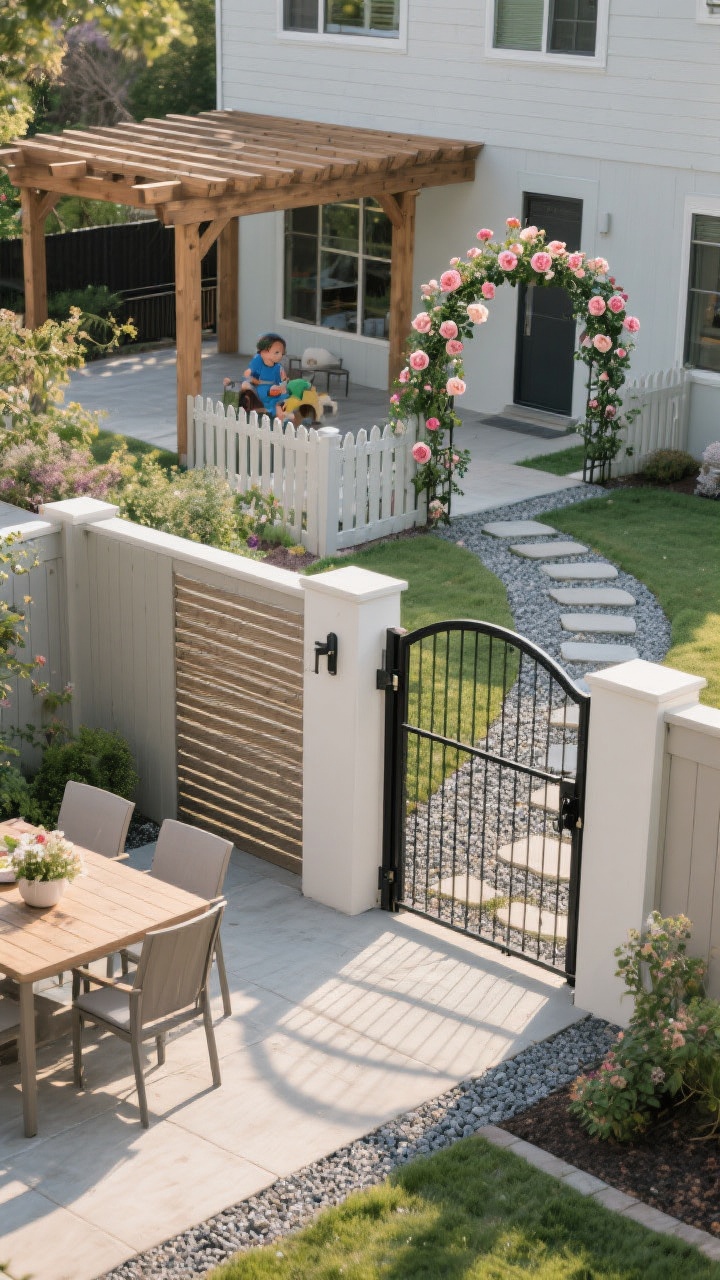Your backyard fence is basically the outfit your yard wears every day. It can be chic, a little scrappy, or full-on showstopper. The good news? You don’t need a massive budget to make it look amazing—just a smart idea, some elbow grease, and a plan you actually love living with.
Below are 5 backyard fence ideas that mix style, privacy, and personality. We’re talking real-life doable upgrades with serious curb (and yard) appeal. Ready to turn that fence from background to main character?
1. Mix Materials For A Designer Look

Want your fence to feel custom without custom prices? Blend materials. Think warm wood slats paired with sleek black metal, or stone bases with cedar panels. The contrast screams “intentional” and looks like a high-end install.
Why It Works
- Texture play: Wood softens metal; stone grounds everything.
- Durability: Metal posts outlast wood ones and mean fewer repairs.
- Instant curb appeal: Mixed materials look sophisticated from every angle.
Design Combos To Try
- Cedar + Black Steel: Horizontal cedar slats with powder-coated steel posts.
- Stone Knee Wall + Wood Panels: A 2–3 ft stone base topped with vertical wood boards.
- Composite + Aluminum: Low-maintenance boards framed in sleek aluminum rails (great for modern homes).
Pro Tips
- Seal the wood: Use a UV-protective stain to keep it golden, not gray.
- Align your lines: If you go horizontal slats, keep spacing consistent—3/8–1/2 inch reads polished.
- Match hardware: Choose black or galvanized screws and brackets so they disappear.
FYI: If you’re in a windy area, mixing metal posts with wood panels is a smart stability move. No more wobbly fence after a storm.
2. Go Green With A Living Fence

If privacy hedges and pretty backdrops had a baby, it’d be a living fence. You can train plants on a wire grid, use trellises, or go full hedge for a lush, noise-softening boundary that looks dreamy year-round.
Plant Options
- Fast Climbers: Star jasmine, clematis, wisteria (if you’ve got strong supports), or hops.
- Evergreen Hedges: Boxwood, privet, podocarpus, or arborvitae for all-season privacy.
- Edible Screen: Espaliered apple or pear trees, grapevines, or passionfruit (pretty and practical).
Ways To Build It
- Trellis Panels: Attach modular trellises to existing fencing for instant structure.
- Cable System: Stainless steel cables on posts create a modern climbing grid.
- Hedge + Fence Combo: Low picket fence in front, dense hedge behind—cute and secure.
Care & Maintenance
- Water smart: Drip irrigation keeps foliage lush without spraying your neighbors.
- Trim strategically: Prune twice a year to keep growth dense and shapely.
- Mind the roots: Use root barriers for bamboo or vigorous shrubs to avoid a takeover.
Bonus: A living fence attracts pollinators and can soften harsh lines around modern homes. It’s like adding a filter to your yard, but, you know, alive.
3. Create Privacy With Style: Slatted + Screens

Privacy doesn’t have to mean walling yourself in. Slatted fences and modular privacy screens give you a cozy hideaway that still feels airy and stylish. Think spa vibes, not fortress.
Design It Your Way
- Horizontal Slats: Clean lines that make small yards look wider.
- Angled “Louver” Panels: Blocks views from neighbors while letting in light and breeze.
- Laser-Cut Metal Screens: Add pattern and shadow play—super chic near patios.
Where To Use Screens
- Outdoor dining area: Create a “room” with two or three panels and a pergola beam overhead.
- Hot tub or lounge corner: Screens + string lights = instant retreat.
- Utility camo: Hide AC units, bins, or pool equipment with matching mini-screens.
Build Smarter
- Spacing matters: 1/2–3/4 inch between slats balances privacy and airflow.
- Stain before assembling: Way easier to coat all sides and prevent warping.
- Anchor well: Use concrete footings or ground spikes; screens catch wind like sails.
IMO, this is the most versatile option if you rent or like to rearrange your outdoor spaces. You can move screens around as your setup evolves.
4. Add Color, Pattern, And Personality

Your fence is basically a giant canvas. Why not give it some personality? Paint, stain, and pattern can transform even the most basic boards into a backdrop that makes your plants and furniture pop.
Color Ideas
- Charcoal or Black: Makes greenery look vibrant and hides imperfections. Very modern.
- Olive or Sage: Nature-inspired and calming—great for layered gardens.
- Two-Tone: Dark posts with light panels (or vice versa) for a tailored look.
Pattern Play
- Board-and-Batten: Add vertical battens to flat panels for subtle texture.
- Chevron or Herringbone: Use angled slats for a statement section behind your seating area.
- Painted Mural: Geometric blocks, ombré wash, or a simple stripe—keep it cohesive with your outdoor palette.
Lighting + Styling
- String Lights: Zigzag overhead or run neat lines along the top rail.
- Fence Planters: Add slim troughs or pockets for herbs and trailing vines.
- Outdoor Art: Weatherproof prints, metal wall hangings, or DIY wooden shapes in a grid.
Pro move: Keep the fence darker and your furniture lighter. The contrast feels fresh and makes the space look bigger. Also, use exterior-grade paint or stain with UV protection so you’re not repainting every summer.
5. Build Zones With Partial Fencing And Gates

Not every fence has to wrap the whole yard. Use partial fences, decorative gates, and arbors to create “rooms” outdoors. It’s like space planning for your garden—super functional and insanely charming.
Smart Ways To Zone
- Dining Nook: A 4–5 ft partial fence on two sides with a pergola defines the area without boxing it in.
- Kid/Pet Area: Low picket or ranch-style rails to keep playtime contained but visible.
- Garden Gate Moment: An arched gate with climbing roses turns a path into a destination.
Gate And Arbor Ideas
- Modern Slat Gate: Horizontal slats with a concealed latch—clean and minimal.
- Classic Lattice Arbor: Paint it white, add jasmine, and prepare for compliments.
- Metal Accent Gate: Black steel framed with wood to match the main fence.
Function First (But Make It Pretty)
- Sightlines: Keep tall elements away from windows to maintain views.
- Pathways: Add stepping stones or gravel where traffic flows through gates.
- Hardware: Choose gate latches that self-close if you’ve got pets or a pool. Safety > drama.
FYI: Partial fencing is perfect if you’re not ready to commit to a full remodel. Start with one zone—like your grilling area—and build out over time.
Bonus Practicalities (Because Future You Will Thank You)
- Check local codes: Height limits and setbacks are a thing. Don’t meet your inspector in tears.
- Neighbors: If it’s on the property line, give them a heads-up. You’ll save yourself drama.
- Maintenance plan: Pressure washing once a year, quick re-stain every 2–3 years for wood.
- Drainage: Keep fence lines off soggy soil; add gravel at posts to prevent rot.
So, which of these 5 backyard fence ideas is calling your name—the mixed-material showpiece, the leafy living wall, the chic privacy screen, the color-forward statement, or the zoned-out gate-and-arbor moment? Start with one, keep it cohesive with your home’s style, and let the rest evolve. Your fence doesn’t have to be background noise. Make it the vibe.
